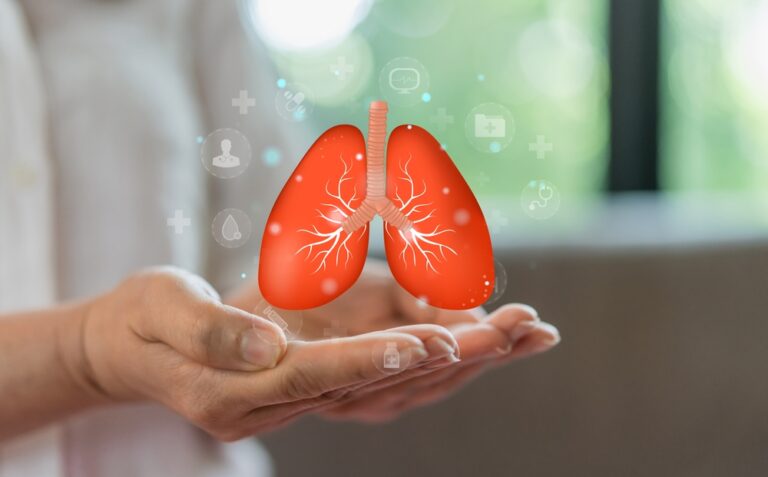Tuberculosis (Lungs & Chest): Causes, Symptoms, and Treatment
Understanding Tuberculosis

TB spreads through the air when a person with active pulmonary TB coughs, sneezes, or even speaks. A person nearby may inhale the bacteria and become infected. However, not everyone who is infected becomes sick. There are two forms of the disease:
- Latent TB: The bacteria remain in the body in an inactive state and cause no symptoms. It isn’t contagious but can turn into active TB.
- Active TB: This form makes people sick and can spread to others. It can occur weeks or years after infection.
Key Risk Factors Include:
- HIV/AIDS: Individuals with HIV have a much higher risk of developing TB.
- Malnutrition: A weak immune system from poor nutrition can make one more susceptible.
- Diabetes: Chronic illnesses can compromise immunity.
- Smoking and alcohol abuse: These habits damage lung function and immunity.
- Close contact with someone with active TB.
- Living or working in crowded conditions, such as prisons, shelters, or refugee camps.
- TB is more common in countries with poor healthcare infrastructure, high poverty rates, and limited access to medications.
Common Symptoms Include:
- Persistent cough lasting more than 3 weeks
- Coughing up blood or sputum (phlegm)
- Chest pain, especially when breathing or coughing
- Unexplained weight loss
- Fever and chills
- Night sweats
- Fatigue and weakness
- Loss of appetite
In some cases, the symptoms may be mild and mistaken for other illnesses like a cold or flu, which delays proper diagnosis.
How is TB Diagnosed?
Diagnosing TB involves a combination of medical history, physical examination, and lab tests.
- Chest X-ray: Helps detect changes in the lungs.
- Sputum test: Sputum is tested under a microscope to identify the TB bacteria.
- Tuberculin skin test (Mantoux test): Indicates whether a person has been exposed to TB bacteria.
- Blood tests: Used especially for latent TB detection.
- CT scans or bronchoscopy: In more complex cases or when X-rays are inconclusive.
Treatment of Tuberculosis
TB is treatable and curable with the right medications. Treatment must be taken seriously and completed fully to avoid complications like drug-resistant TB.
Standard TB Treatment Involves:
- A 6-month course of antibiotics: The most commonly used drugs include Isoniazid, Rifampicin, Pyrazinamide, and Ethambutol.
- Directly Observed Therapy (DOT): A healthcare provider supervises medication intake to ensure adherence and prevent resistance.
Patients begin to feel better in a few weeks, but it is critical to continue the full course to prevent the disease from returning in a more severe, drug-resistant form.
Drug-Resistant TB
- Occurs when patients do not complete their full treatment course or if the bacteria become resistant to the primary drugs.
- Requires longer and more complex treatment, often with more side effects.
Prevention of TB
Preventing TB involves public health efforts and individual care:
- BCG vaccine: Commonly given to infants in countries where TB is prevalent.
- Screening and early detection: Especially for high-risk groups.
- Isolation: Infected individuals should avoid close contact with others until they are non-infectious.
- Use of masks and good ventilation: Reduces airborne spread.
- Healthy lifestyle: A strong immune system helps fight infections.
Living with TB
A TB diagnosis can be emotionally and physically challenging, but with the right support and adherence to treatment, full recovery is achievable.
Patients are advised to:
- Take medications exactly as prescribed
- Attend all follow-up appointments
- Eat a balanced, nutritious diet to aid recovery
- Avoid smoking and alcohol
- Rest adequately
Support from family and the community plays a vital role in healing and coping with the disease. Education and awareness can help eliminate the stigma often associated with TB.
Conclusion:
Tuberculosis, especially in the lungs and chest, remains a serious public health issue. However, with proper awareness, early detection, and consistent treatment, TB is entirely manageable and curable. It’s essential to complete the entire treatment and take preventive steps to protect oneself and others. Public health initiatives, along with individual responsibility, can help us move toward a TB-free world.